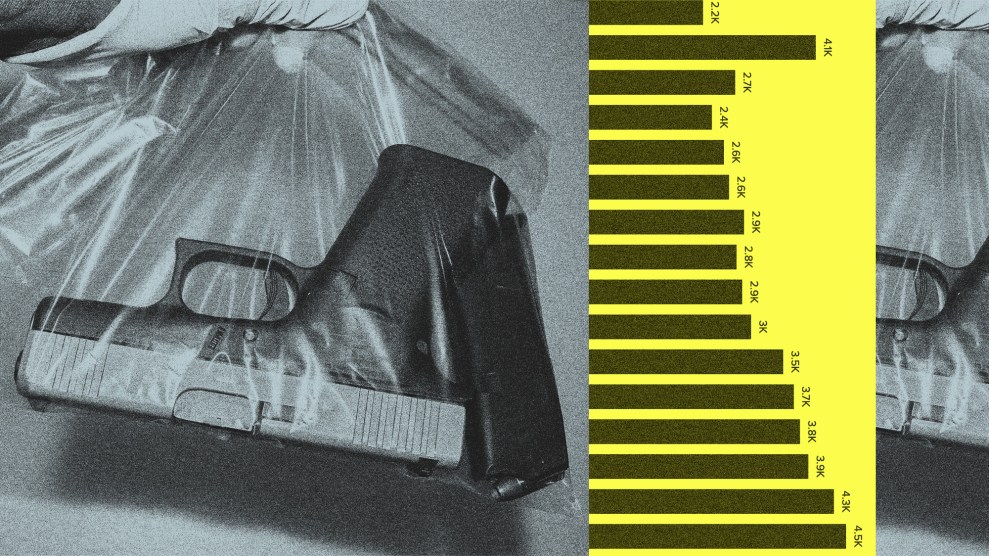[Note: this text accompanies a photo essay by Patrick Brown in the July/August 2005 print issue of Mother Jones.]
PATRICK BROWN remembers when the magnitude of it all hit him, in a dark, flashbulb-illuminated room at Bangkok International Airport. Brown’s phone had rung at 3:30 a.m.; his contact at the Thai Royal Forestry Department was calling to announce a seizure of wildlife contraband. Brown, who for the past two years has been documenting the international trade in animals, had no idea what to expect—a package of tiger teeth on their way to China? Some rhino horns, popular as biological Viagra?
The catch turned out to be live pangolins—endangered mammals that look like a cross between a possum and a pinecone—482 of them, carefully stowed in shipping crates with dry ice to induce hibernation. “It was incredibly professional, very organized,” Brown recalls. “That’s when it really hit me that this is a major business, not just some guys out to make a few bucks.”
Ever since the economic boom of the ’90s, the trade in Asian wildlife has exploded, making animal smuggling a multinational industry worth, by some estimates, $30 billion a year; that’s more than the annual revenues of Coca-Cola (and more, also, than the international trade in humans). Much of the trade is in what Brown calls the “big, sexy animals”—tigers, rhinos, orangutans. But, humans being omnivorous both in what we eat and what we use as medicine, just about any creature can be worth money, especially if it’s rare. Though much of the market is centered in China, Europeans, Japanese, and Americans account for at least 60 percent of the total. Like any business worth its salt, the animal trade continues to expand into new niches: With pharmaceutical research overseas, for instance, the demand for monkeys in China and India has skyrocketed. All of which means that, at the rate we’re going, humans will probably have extinguished several of the most lucrative species—especially Asia’s majestic tigers—before decade’s end.
A wildlife seizure at Bangkok International Airport becomes a media feeding frenzy as Thai officials line up to get their photos taken alongside a very confused pangolin.
Though governments the world over pay lip service to curbing the wildlife trade, enforcement almost always takes a back- seat. In England, Scotland Yard has assigned only 4 of its 44,000 employees to wildlife smuggling; in Guwahati, India, vendors openly shave chips off a rhino horn; in Cambodia’s Bokor National Park, a nonprofit group teaches forestry officials how to catch poachers, such as this man, who was ambushed at his jungle camp.
Like any illegal business, the wildlife trade does best in the shadows—in border towns and war zones, among people desperate for a livelihood. In Nepal’s Royal Chitwan National Park, the army has cut back on elephant antipoaching patrols amid a guerrilla war; in the Thai/Burmese border towns of Moung
La and Tachilek, everything from buffalo heads to giant pythons (middle) to macaque skulls is on display for tourists, who pay as little as $10 for a tiger penis.












